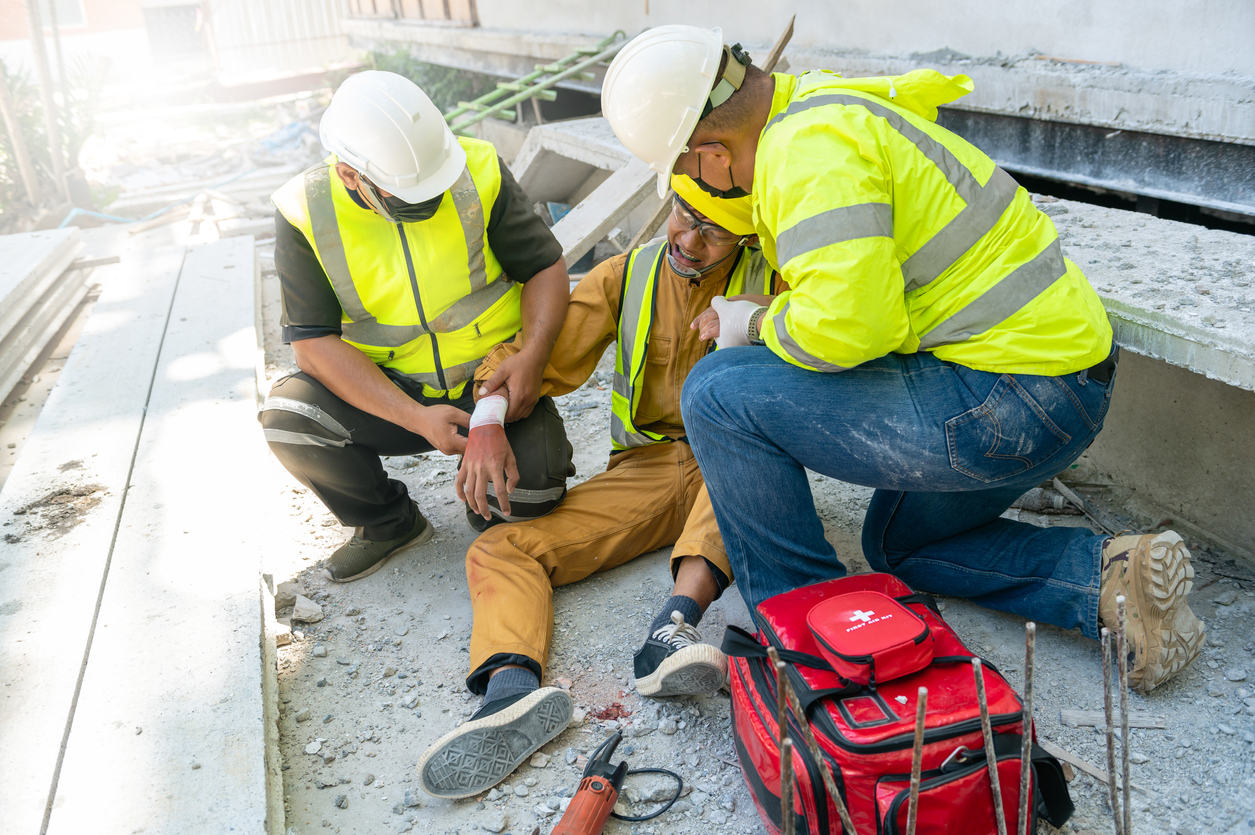Rosenbaum & Rosenbaum, P.C. | September 7, 2022 | Construction Accidents

Working in construction can be extremely dangerous. These workers put themselves at risk daily, building the structures that are essential to modern life. When accidents happen, the stakes can be much higher because of the nature of construction work.
According to the National Safety Council, construction is considered one of the most dangerous industries to work in. Government data shows that there were a total of 1,008 construction fatalities in 2020.
The Occupational Safety and Health Administration (OSHA) is the federal agency in charge of keeping workers and workplaces safe. OSHA came up with the term “fatal four” to describe the four leading causes of fatalities in construction accidents.
The hope is that identifying the four main causes of fatalities can help raise awareness and prevent future fatalities on work sites.
The OSHA fatal 4 are:
- Falls
- Caught-In/Between Objects
- Struck-By an Object
- Electrocutions
A reduction in fatalities for these fatal four alone would significantly reduce the percentage of overall workplace fatalities in the United States.
OSHA’s Fatal Four to Watch For on Construction Sites
The OSHA fatal four hazards cause roughly two-thirds of construction fatalities. We discuss each in detail below.
Falls
Falls are the top cause of construction site fatalities. OSHA defines a fall hazard as anything at a worksite that could cause a worker to lose their balance and fall.
These types of accidents typically happen when there are unprotected sides or holes on the worksite. They can also occur when using cranes, ladders, roofs, scaffolding, and other large construction equipment.
For example, a makeshift scaffold could collapse beneath the weight of workers and equipment, causing serious injury. Or a worker could step into a roof opening where a skylight was going to be installed and fall to the level below.
Caught-In or Caught-Between Objects
This category refers to accidents where a worker is pinned in or caught between machinery or other objects. They can also happen on trench and excavation sites if there is a cave-in.
An example of a caught-in or caught-between accident is if a worker’s arm or leg was pulled into an unguarded piece of machinery. Fatalities can also occur when a piece of equipment isn’t appropriately locked or if a heavy piece of machinery tips or falls over.
Struck-By Objects
These types of injuries are caused when a falling object strikes a worker. For example, say a worker is carrying bricks in a bucket to the top of a structure. If the bucket tilts and bricks spill out, the chances are great they would hit another worker.
Another example is if a worker operates a crane, drops the object, and it falls on another worker.
Electrocutions
Exposure to electricity is a very serious hazard for workers in the construction industry. In addition to electrocution, the danger includes burns from electric shock and fire from faulty wiring and outlets.
An example of this type of accident is if workers were moving an aluminum ladder and inadvertently came in contact with overhead power lines, causing them to be electrocuted. Or if a worker is electrocuted when connecting an electrical service box.
Contact an Experienced New York City Construction Accident Lawyer to Discuss Your Worksite Injuries
Construction workers who are injured on the job site can usually recover workers’ compensation benefits through their employer. These benefits will reimburse workers for reasonable medical expenses and a portion of their lost wages. They also provide permanent disability and death benefits.
There are instances where workers’ compensation doesn’t provide enough to cover all of your expenses. Consult an NYC construction accident lawyer to see what options may be available to you.
If you’ve been injured in an accident in Manhattan, NY, and need legal help, contact our New York City construction accident lawyers at Rosenbaum & Rosenbaum, P.C. to schedule a free consultation.
Rosenbaum & Rosenbaum, P.C.
100 Wall St 15th Floor
New York, NY 10005
(212) 514-5007
